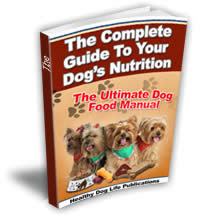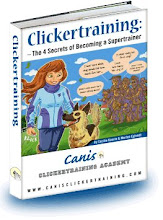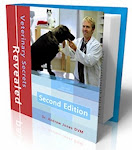
Origin:
The Airedale had its beginnings in 1853 when some working men in Yorkshire, England, mated an Otterhound with a rough-coated Black and Tan Terrier. Otters abounded in the nearby Aire and Wharfe rivers and rats were an everyday problem. Ideally, a sporting dog such as the Otterhound would be used to take on the otters, while a couple of terriers would tend to the rats. Rather than keep and feed a kennel of dogs, the originators of the Airedale elected to combine the two types to come up with one dog that could handle all tasks. Continued crosses over the next dozen years resulted in the Waterside Terrier, which later became known as the Airedale. As the breeders envisioned, the Airedale became a most versatile dog, used to hunt, retrieve, dispatch vermin, herd and guard.
Temperament:
Dubbed "King of the Terriers," the Airedale maintains a steady disposition as befits nobility. It is alert and makes an excellent watchdog. A multi-talented dog, the Airedale can do well in obedience work.
Activity Level:
Moderate. Though its terrier heritage is evident in its demeanour, it is neither hyper nor yappy. However, a daily walk or other regular activity is definitely recommended.
Height/Weight:
The average height for a dog is 23 in (58 cm) at the shoulder. Weight should be in proportion for a sturdy, well-muscled dog.
Coat:
The dense coat is composed of a harsh, wiry outer coat and softer undercoat. It may be crinkled or slightly wavy.
Color:
The coat is tan with a black or dark grizzle 'saddle' marking.
Grooming:
For show purposes, the coat is groomed by plucking the hairs, using your fingers and a special knife. However, for pets, clipping is the easy way to keep the coat looking smart.
The Airedale had its beginnings in 1853 when some working men in Yorkshire, England, mated an Otterhound with a rough-coated Black and Tan Terrier. Otters abounded in the nearby Aire and Wharfe rivers and rats were an everyday problem. Ideally, a sporting dog such as the Otterhound would be used to take on the otters, while a couple of terriers would tend to the rats. Rather than keep and feed a kennel of dogs, the originators of the Airedale elected to combine the two types to come up with one dog that could handle all tasks. Continued crosses over the next dozen years resulted in the Waterside Terrier, which later became known as the Airedale. As the breeders envisioned, the Airedale became a most versatile dog, used to hunt, retrieve, dispatch vermin, herd and guard.
Temperament:
Dubbed "King of the Terriers," the Airedale maintains a steady disposition as befits nobility. It is alert and makes an excellent watchdog. A multi-talented dog, the Airedale can do well in obedience work.
Activity Level:
Moderate. Though its terrier heritage is evident in its demeanour, it is neither hyper nor yappy. However, a daily walk or other regular activity is definitely recommended.
Height/Weight:
The average height for a dog is 23 in (58 cm) at the shoulder. Weight should be in proportion for a sturdy, well-muscled dog.
Coat:
The dense coat is composed of a harsh, wiry outer coat and softer undercoat. It may be crinkled or slightly wavy.
Color:
The coat is tan with a black or dark grizzle 'saddle' marking.
Grooming:
For show purposes, the coat is groomed by plucking the hairs, using your fingers and a special knife. However, for pets, clipping is the easy way to keep the coat looking smart.
























